
Parornix anglicella is a moth of the family Gracillariidae found in Asia and Europe. It was described in 1850, by the English entomologist Henry Tibbats Stainton, from a specimen from Lewisham, Kent.

Enteucha acetosae, the pygmy sorrel moth, is a moth of the family Nepticulidae found in Europe. It is one of the smallest moths in the world with some having a wingspan of only 3mm. The larvae mine the leaves of docks, leaving bright red tissue around the mines.
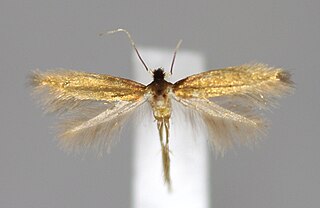
Bucculatrix nigricomella is a species of moth of the family Bucculatricidae. It was first described in 1839 by Philipp Christoph Zeller. It is found in most of Europe.
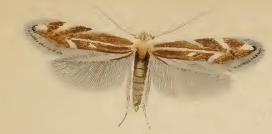
Bucculatrix maritima is a species of moth of the family Bucculatricidae. It is found in most of Europe, Russia and Japan. It was first described in 1851 by Henry Tibbats Stainton.
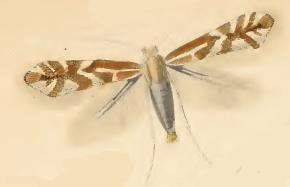
Phyllonorycter viminetorum is a moth of the family Gracillariidae. It is found from Latvia to the Pyrenees and Italy and from Ireland to Ukraine.
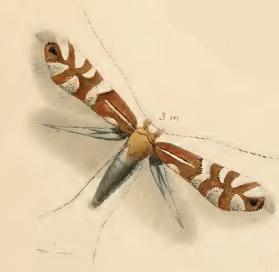
Phyllonorycter ulmifoliella is a moth of the family Gracillariidae. It is found in all of Europe, east to Russia and Japan.

Phyllonorycter hilarella is a moth of the family Gracillariidae. It is found in all of Europe, except the Balkan Peninsula and the Mediterranean Islands.
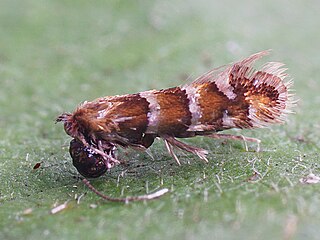
Phyllonorycter klemannella is a moth of the family Gracillariidae. It is known from all of Europe, except Greece.

Phyllonorycter nigrescentella is a moth of the family Gracillariidae. It is known from all of Europe except the Balkan Peninsula.

Phyllonorycter quinqueguttella is a moth of the family Gracillariidae. It is found from Fennoscandia to the Pyrenees, Alps, Hungary and Ukraine and from Ireland to central Russia.

Phyllonorycter salictella is a moth of the family Gracillariidae. It is known from all of Europe, east to Russia and Japan.

Phyllocnistis unipunctella is a moth of the family Gracillariidae. It is known from all of Europe.

Parornix betulae is a moth of the family Gracillariidae. It is known from all of Europe, east to Korea. It was recently reported from Canada, with records from Québec, Ontario and British Columbia.

Parornix devoniella is a moth of the family Gracillariidae found in Europe. The larvae are leaf miners, feeding on the tissue inside the leaves of hazels Corylus species.

Parornix loganella is a moth of the family Gracillariidae. It is found from Fennoscandia and northern Russia to the British Isles, Denmark and the Baltic States.

Parornix scoticella is a moth of the family Gracillariidae. It is known from all of Europe.
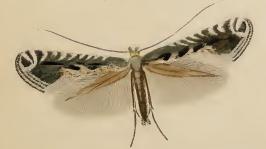
Parornix torquillella is a moth of the family Gracillariidae found in Europe. The larvae mine the leaves of Prunus species, such as blackthorn. It was described by the German entomologist Philipp Christoph Zeller in 1850, from specimens found in Florence, Leghorn and Pisa.
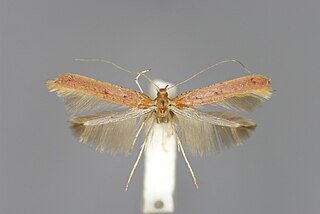
Caloptilia elongella is a moth of the family Gracillariidae. It is known from all of Europe east to eastern Russia. It is also found in North America from British Columbia, south to California and east in the north to New Hampshire and New York.

Scrobipalpa samadensis, the buck's-horn groundling, is a moth of the family Gelechiidae. It is found in most of Europe and Russia.
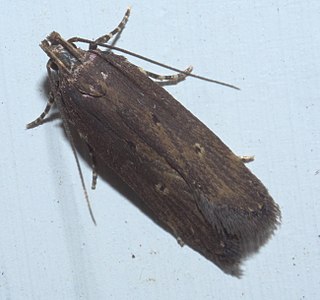
Chionodes discoocellella, the eyeringed chionodes moth, is a moth in the family Gelechiidae. It is found in the United States, where it has been recorded from Maine to South Dakota, Florida, Texas and Colorado.
















